#Civil Notes PDF
Explore tagged Tumblr posts
Text
youtube
#When Johnny Comes Marching Home#American Civil War#Piano#violin#guitar#sheet music#music notes#flute#notes#piano sheet music#pdf#Youtube
0 notes
Text
Writing Notes: Hooking your Readers
Hook—The first line, lines, or paragraph meant to grab the reader’s attention
For most people, a night out at the movies includes sitting through the coming attractions. We watch these short bursts of scenes that scare us, intrigue us, make us laugh, and sometimes nearly bring us to tears. No matter the preview, though, if it looks good, we want to go see the movie. An effective “hook” in your story works the same way. You want to grab your reader right away and compel them to continue reading.
Some common strategies for creating a hook & examples:
Anecdote: My hands shook and beads of sweat rolled down my face. I double-checked the directions before assembling my tools and turning up the heat. Making lasagna shouldn’t have been this stressful, but in my grandmother’s kitchen, the stakes were a little higher.
Direct quote: “Be open and use the world around you.” Toni Morrison gives this advice about the craft of writing, but I find that it applies to most areas of my life.
General statement or truth: Every child, no matter how sheltered or well-adjusted, will experience fear. Whether they are scared of the monster under the bed or the neighbor’s barking dog, children experience fear as a normal and healthy part of childhood.
History: On Wednesday, August 28, 1963, thousands traveled to Washington D.C. by road, rail, and air. There were demonstrators of all races, creeds, and genders. Unafraid of the intimidation and violence they faced, they demonstrated for the rights of all. Known as The Great March on Washington, this day marked an important turning point in the Civil Rights Movement in the United States.
Metaphor: Stretched out in a sunbeam, my cat may seem timid, but really, she’s a lion. She will stealthily stalk her prey, attack without mercy, and leave a trail of blood and guts in her wake. Afterward, as she grooms her luxurious mane, she shows no remorse.
Scene or illustration: Shadows stretch across the pavement as jack-o-lanterns flicker in windows. Little trick-or-treaters scamper from porch to porch, filling their bags with various forms of sugar. It is the day dentists dread most: Halloween.
Sensory description: The stale smell of cigarettes engulfed me as I stepped into the dim, silent apartment. The heat had been turned off, so I could see my breath fog in front of me as I carefully stepped over the old pizza boxes, overturned cups, and random pieces of paper strewn across the floor.
Startling statistic or statement: Teenage drivers crash their cars at nearly ten times the rate of older drivers.
More: Writing Notes & References ⚜ Writing Resources PDFs
#writing prompt#writeblr#writing resources#writing tips#hook#studyblr#dark academia#writing advice#literature#writers on tumblr#poets on tumblr#poetry#lit#light academia#langblr#booklr#reading#books#spilled ink#writing reference
2K notes
·
View notes
Text
April 14, Xi'an, China, Shaanxi History Museum, Qin and Han Dynasties Branch (Part 3 – Innovations and Philosophies):
(Edit: sorry this post came out so late, I got hit by the truck named life and had to get some rest, and this post in itself took some effort to research. But anyway it's finally up, please enjoy!)
A little background first, because this naming might lead to some confusions.....when you see location adjectives like "eastern", "western", "northern", "southern" added to the front of Zhou dynasty, Han dynasty, Song dynasty, and Jin/晋 dynasty, it just means the location of the capital city has changed. For example Han dynasty had its capital at Chang'an (Xi'an today) in the beginning, but after the very brief but not officially recognized "Xin dynasty" (9 - 23 AD; not officially recognized in traditional Chinese historiography, it's usually seen as a part of Han dynasty), Luoyang became the new capital. Because Chang'an is geographically to the west of Luoyang, the Han dynasty pre-Xin is called Western Han dynasty (202 BC - 8 AD), and the Han dynasty post-Xin is called Eastern Han dynasty (25 - 220 AD). As you can see here, in these cases this sort of adjective is simply used to indicate different time periods in the same dynasty.
Model of a dragonbone water lift/龙骨水车, Eastern Han dynasty. This is mainly used to push water up to higher elevations for the purpose of irrigation:
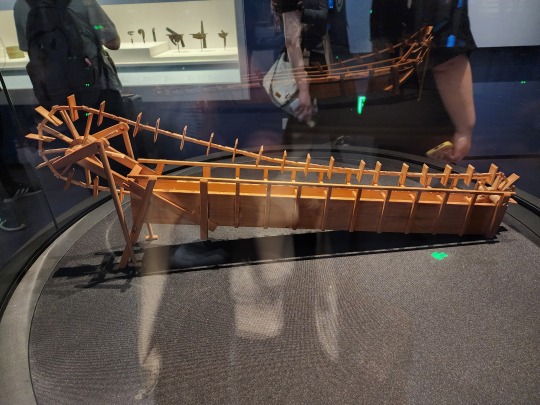
Model of a water-powered bellows/冶铁水排, Eastern Han dynasty. Just as the name implies, as flowing water pushes the water wheel around, the parts connected to the axle will pull and push on the bellows alternately, delivering more air to the furnace for the purpose of casting iron.

The Nine Chapters on the Mathematical Art/《九章算术》, Fangcheng/方程 chapter. It’s a compilation of the work of many scholars from 10 th century BC until 2 nd century AD, and while the earliest authors are unknown, it has been edited and supplemented by known scholars during Western Han dynasty (also when the final version of this book was compiled), then commented on by scholars during Three Kingdoms period (Kingdom of Wei) and Tang dynasty. The final version contains 246 example problems and solutions that focus on practical applications, for example measuring land, surveying land, construction, trading, and distributing taxes. This focus on practicality is because it has been used as a textbook to train civil servants. Note that during Han dynasty, fangcheng means the method of solving systems of linear equations; today, fangcheng simply means equation. For anyone who wants to know a little more about this book and math in ancient China, here’s an article about it. (link goes to pdf)
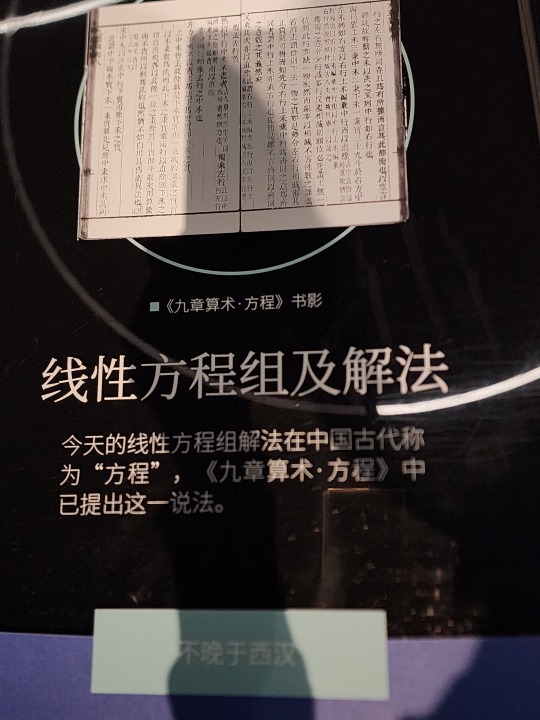
Diagram of a circle in a right triangle (called “勾股容圆” in Chinese), from the book Ceyuan Haijing/《测圆��镜》 by Yuan-era mathematician Li Ye/李冶 (his name was originally Li Zhi/李治) in 1248. Note that Pythagorean Theorem was known by the name Gougu Theorem/勾股定理 in ancient China, where gou/勾 and gu/股 mean the shorter and longer legs of the right triangle respectively, and the hypotenuse is named xian/弦 (unlike what the above linked article suggests, this naming has more to do with the ancient Chinese percussion instrument qing/磬, which is shaped similar to a right triangle). Gougu Theorem was recorded in the ancient Chinese mathematical work Zhoubi Suanjing/《周髀算经》, and the name Gougu Theorem is still used in China today.

Diagram of the proof for Gougu Theorem in Zhoubi Suanjing. The sentence on the left translates to "gou (shorter leg) squared and gu (longer leg) squared makes up xian (hypotenuse) squared", which is basically the equation a² + b² = c². Note that the character for "squared" here (mi/幂) means "power" today.

This is a diagram of Zhang Heng’s seismoscope, called houfeng didong yi/候风地动仪 (lit. “instrument that measures the winds and the movements of the earth”). It was invented during Eastern Han dynasty, but no artifact of houfeng didong yi has been discovered yet, this is presumably due to constant wars at the end of Eastern Han dynasty. All models and diagrams that exist right now are what historians and seismologists think it should look like based on descriptions from Eastern Han dynasty. This diagram is based on the most popular model by Wang Zhenduo that has an inverted column at the center, but this model has been widely criticized for its ability to actually detect earthquakes. A newer model that came out in 2005 with a swinging column pendulum in the center has shown the ability to detect earthquakes, but has yet to demonstrate ability to reliably detect the direction where the waves originate, and is also inconsistent with the descriptions recorded in ancient texts. What houfeng didong yi really looks like and how it really works remains a mystery.
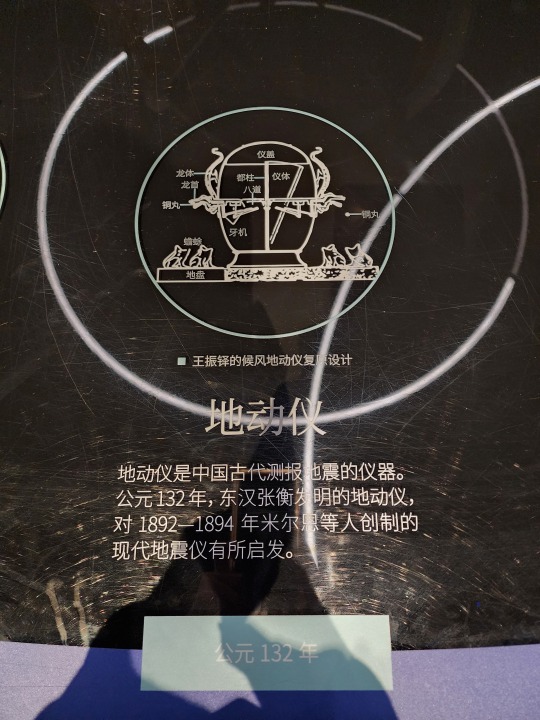
Xin dynasty bronze calipers, the earliest sliding caliper found as of now (not the earliest caliper btw). This diagram is the line drawing of the actual artifact (right).


Ancient Chinese "Jacquard" loom (called 提花机 or simply 花机 in Chinese, lit. "raise pattern machine"), which first appeared no later than 1st century BC. The illustration here is from the Ming-era (1368 - 1644) encyclopedia Tiangong Kaiwu/《天工开物》. Basically it's a giant loom operated by two people, the person below is the weaver, and the person sitting atop is the one who controls which warp threads should be lifted at what time (all already determined at the designing stage before any weaving begins), which creates patterns woven into the fabric. Here is a video that briefly shows how this type of loom works (start from around 1:00). For Hanfu lovers, this is how zhuanghua/妆花 fabric used to be woven, and how traditional silk fabrics like yunjin/云锦 continue to be woven. Because it is so labor intensive, real jacquard silk brocade woven this way are extremely expensive, so the vast majority of zhuanghua hanfu on the market are made from machine woven synthetic materials.

Chinese purple is a synthetic pigment with the chemical formula BaCuSi2O6. There's also a Chinese blue pigment. If anyone is interested in the chemistry of these two compounds, here's a paper on the topic. (link goes to pdf)

A list of common colors used in Qin and Han dynasties and the pigments involved. White pigment comes from chalk, lead compounds, and powdered sea shells; green pigment comes from malachite mineral; blue pigment usually comes from azurite mineral; black comes from pine soot and graphite; red comes from cinnabar; ochre comes from hematite; and yellow comes from realgar and orpiment minerals.

Also here are names of different colors and shades during Han dynasty. It's worth noting that qing/青 can mean green (ex: 青草, "green grass"), blue (ex: 青天, "blue sky"), any shade between green and blue, or even black (ex: 青丝, "black hair") in ancient Chinese depending on the context. Today 青 can mean green, blue, and everything in between.

Western Han-era bronze lamp shaped like a goose holding a fish in its beak. This lamp is interesting as the whole thing is hollow, so the smoke from the fire in the lamp (the fish shaped part) will go up into the neck of the goose, then go down into the body of the goose where there's water to catch the smoke, this way the smoke will not be released to the surrounding environment. There are also other lamps from around the same time designed like this, for example the famous gilt bronze lamp that's shaped like a kneeling person holding a lamp.


Part of a Qin-era (?) clay drainage pipe system:
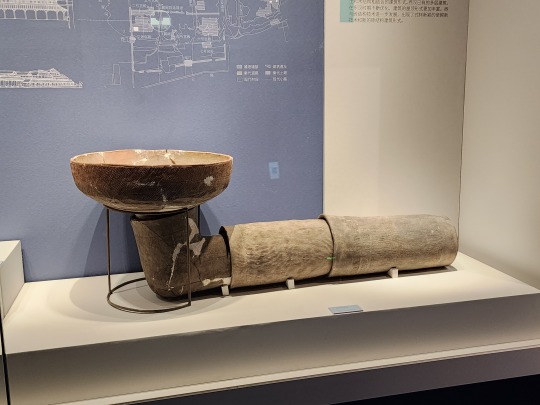
A list of canals that was dug during Warring States period, Qin dynasty, and pre-Emperor Wu of Han Han dynasty (475 - 141 BC). Their purposes vary from transportation to irrigation. The name of the first canal on the list, Hong Gou/鸿沟, has already become a word in Chinese language, a metaphor for a clear separation that cannot be crossed (ex: 不可逾越的鸿沟, meaning "a gulf that cannot be crossed").
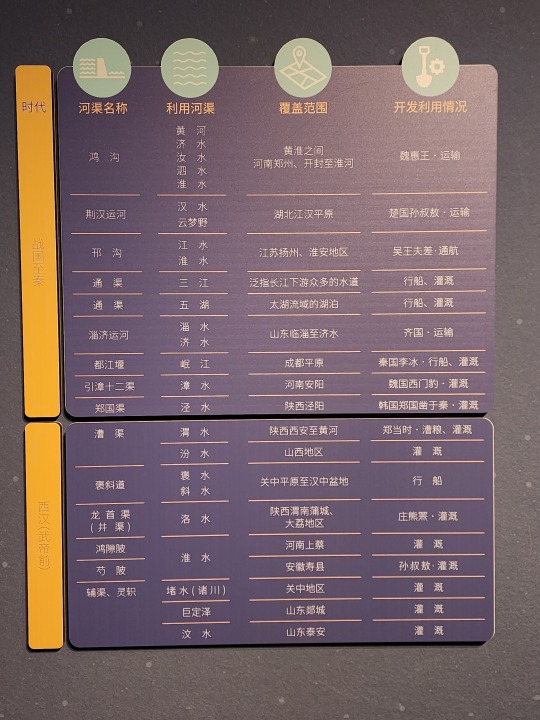
Han-era wooden boat. This boat is special in that its construction has clear inspirations from the ancient Romans, another indication of the amount of information exchange that took place along the Silk Road:

A model that shows how the Great Wall was constructed in Qin dynasty. Laborers would use bamboo to construct a scaffold (bamboo scaffolding is still used in construction today btw, though it's being gradually phased out) so people and materials (stone bricks and dirt) can get up onto the wall. Then the dirt in the middle of the wall would be compressed into rammed earth, called hangtu/夯土. A layer of stone bricks may be added to the outside of the hangtu wall to protect it from the elements. This was also the method of construction for many city walls in ancient China.

A list of the schools of thought that existed during Warring States period, their most influential figures, their scholars, and their most famous works. These include Confucianism (called Ru Jia/儒家 in Chinese; usually the suffix "家" at the end denotes a school of thought, not a religion; the suffix "教" is that one that denotes a religion), Daoism/道家, Legalism (Fa Jia/法家), Mohism/墨家, etc.

The "Five Classics" (五经) in the "Four Books and Five Classics" (四书五经) associated with the Confucian tradition, they are Shijing/《诗经》 (Classic of Poetry), Yijing/《易经》 (also known as I Ching), Shangshu/《尚书》 (Classic of History), Liji/《礼记》 (Book of Rites), and Chunqiu/《春秋》 (Spring and Autumn Annals). The "Four Books" (四书) are Daxue/《大学》 (Great Learning), Zhongyong/《中庸》 (Doctrine of the Mean), Lunyu/《论语》 (Analects), and Mengzi/《孟子》 (known as Mencius).

And finally the souvenir shop! Here's a Chinese chess (xiangqi/象棋) set where the pieces are fashioned like Western chess, in that they actually look like the things they are supposed to represent, compared to traditional Chinese chess pieces where each one is just a round wooden piece with the Chinese character for the piece on top:
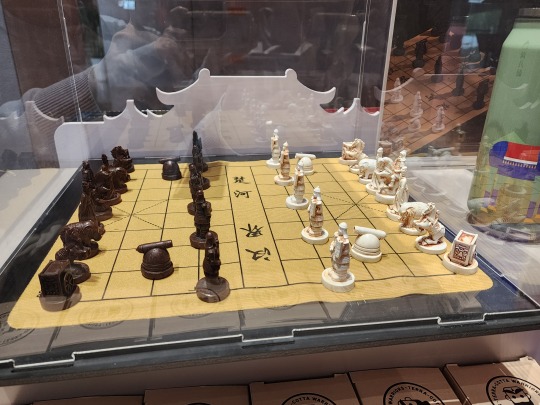
A blind box set of small figurines that are supposed to mimic Shang and Zhou era animal-shaped bronze vessels. Fun fact, in Shang dynasty people revered owls, and there was a female general named Fu Hao/妇好 who was buried with an owl-shaped bronze vessel, so that's why this set has three different owls (top left, top right, and middle). I got one of these owls (I love birds so yay!)


And that concludes the museums I visited while in Xi'an!
#2024 china#xi'an#china#shaanxi history museum qin and han dynasties branch#chinese history#chinese culture#chinese language#qin dynasty#han dynasty#warring states period#chinese philosophy#ancient technology#math history#history#culture#language
96 notes
·
View notes
Text
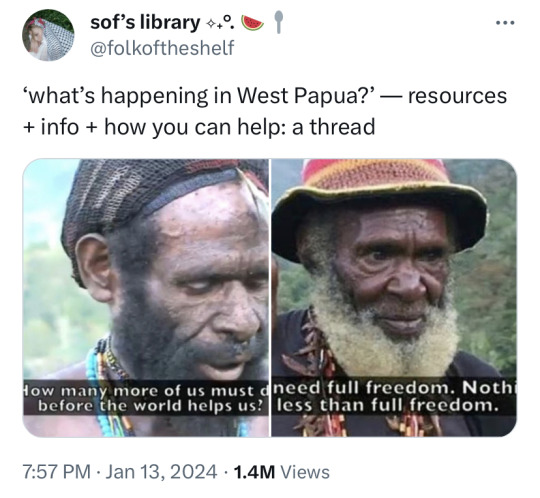
articles and news on what’s happening in west papua are so appallingly scarce that i could rarely find any except a few before this. as an indonesian, i didn’t even know any of this is happening in the first place until a few months ago because rarely any of the big news outlets have ever brought it up, much less in a scale that is necessary to gain the world’s attention. SO PLEASE CHECK THIS OUT, one article at a time if it seems too much (which is what i'm currently doing too).
i think it’s important to note that while indonesia has been loudly advocating for palestine’s freedom, it has also been committing silent acts of violence against the people of west papua and exploiting them for years and silence those AND others who have tried to bring it to light.
things included in the thread ->
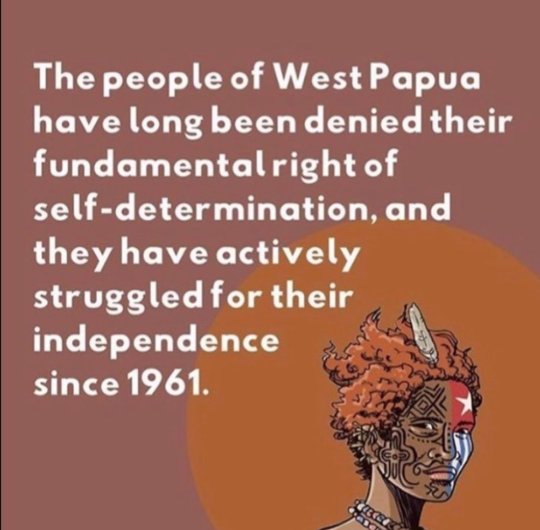
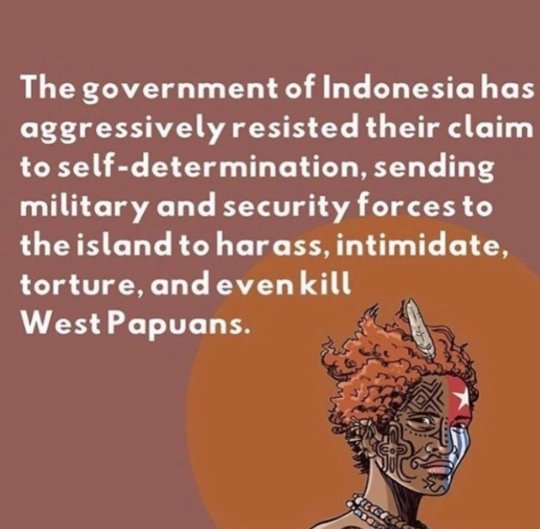
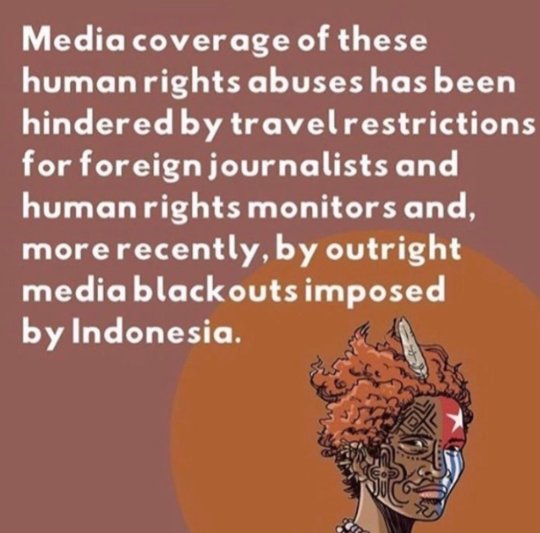
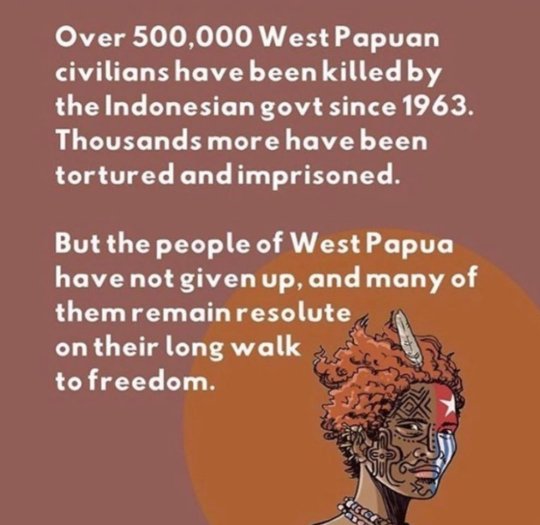
ARTICLES :
freewestpapua.org *the link isn't working at the moment but op has included screenshots in the tweet!
west papua : a history of exploitation (al jazeera)
courtesy of amnesty international
OTHERS :
amnesty international - "sudah, kasi tinggal dia mati" pembunuhan dan impunitas di papua (in bahasa)
BOOKS TO READ :
'the road : uprising in west papua' by john martinkus
'an act of free choice : decolonisation and the right to self-determination in west papua' by pieter drooglever
'merdeka and the morning star : civil resistance in west papua' by jason macleod
’see no evil : new zealand’s betrayal of the people of west papua’ by maire leadbeater
‘freedom in entangled worlds’ by eben kirksey
‘poisoned arrows’ by george monbiot
‘papua blood’ by peter bang
’west papua and indonesia since suharto’ by peter king
pdf available :
’the united nations and the indonesian takeover of west papua’ by john saltford
’west papua : the obliteration of a people’ by carmel budiardjo and liem soei liong
FILMS TO WATCH :
rebels of the forgotten world (1991)
blood on the cross (1999)
freedom for west papua (1999)
papua merdeka (2002)
west papua — the secret war in asia (2007)
forgotten bird of paradise (2009)
strange birds in paradise — a west papuan story (2010)
west papua — a journey to freedom (2011)
mama malind su hilang (our land has gone)
benny wenda — oslo freedom forum (2012)
isolated (2013)
courage is contagious — TEDx sydney (2013)
the road to home (2015)
punks for west papua (2016)
run it straight (2016)
act of no choice (2019)
paradise bombed (2023)
investigative tv reports :
inside indonesia’s secret war for west papua — ABC news (2020)
selling out west papua — al jazeera (2020)
INFOGRAPHICS :
amnesty international
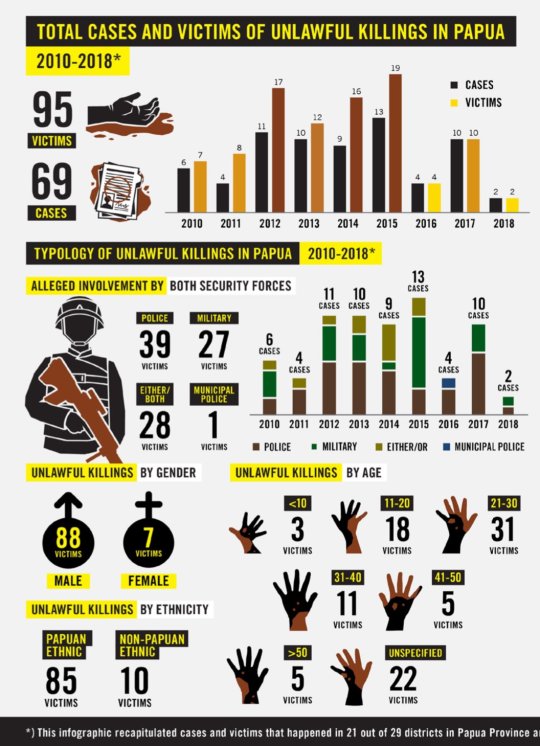

brief history
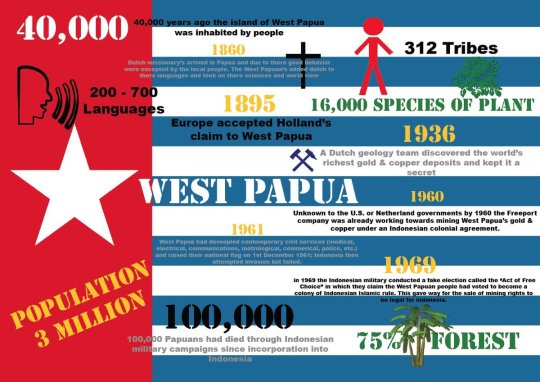
2017

2018
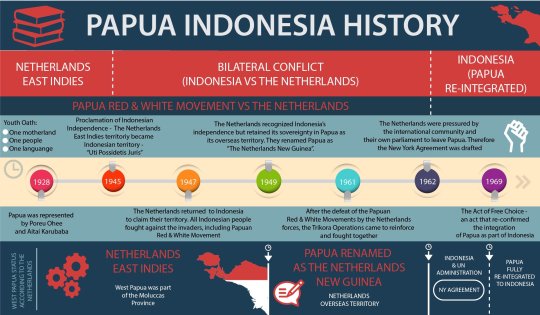

#putting a keep reading because i know some of you hate reblogging long posts that don’t match your aesthetic or whatever#west papua#free west papua#indonesia#papua new guinea#news
269 notes
·
View notes
Text
Israel’s Enemies Tell Five Big Lies
Following the worst massacre of Jews since the Holocaust, antisemites mount a series of vicious attacks, threats and malicious lies against Jews and Israel
With no shame or sign of humanity, the enemies of Israel have doubled down on their insistence that Israel is an illegitimate state that must be destroyed and that the savage slaughter of 1,200 innocent Jews was justified—all based on five “Big Lies” about the Jewish state.
What are the facts?
The world for Jews and Israel will never be the same. Wellesley College students receive official messages saying Zionists (i.e. most Jewish students) are not welcome in the school’s dorms. Hamas official Ghazi Hamad in a TV rant swears Hamas will repeat October 7 over and over until Israel is annihilated. West Bank Palestinian activist Ahed Tamimi says “What Hitler did to you was a joke—we will drink your blood and eat your skull.”
While Hamas’s October 7 atrocity shattered the hope of many Palestinian supporters, causing them to rethink their positions, the event only ignited an explosion of hate from other of Israel’s enemies. Tens of thousands of demonstrators made clear they no longer support two states living side by side in peace. Rather they demand “From the river to the sea, Palestine will be free . . . by any means necessary”—meaning, clearly, slaughter of civilians.
Power of Big Lies: Though Israel was the victim of a mass murder of innocent Jews, its enemies blame the Jewish state—not only for the Hamas massacre, but also for responding in defense. The reasons many blame Israel for the atrocity are based on five Big Lies. Big Lies were used by Nazi leader Goebbels, who noted that if he told an outrageous lie often enough, people would begin to believe it. Alternatively, if you use truth as a basis for your judgments, you may these facts useful:
Lie #1: Israel is a colonial state that stole Palestinian land. A colonizer is a foreign nation that conquers and exploits another nation. First, the Palestinians have never controlled any land in Palestine: They were also never a nation. Nothing was stolen. Second, Jews are the indigenous people of the land of Israel. They have lived there continuously for 3,000 years and had two commonwealths for over 1,000 years: They are not foreigners. No colonial state.
Lie #2: Israel commits genocide. Genocide is the intent to destroy a national, ethnic, racial or religious group by killing its members. Israel does not, nor has ever, targeted innocent Palestinian civilians for killing—no mass murders, no pogroms. All Palestinian civilian deaths have occurred as collateral damage while fighting terrorists who hide in residential or other public areas. Tellingly, the population in in and around Israel has mushroomed since Israel’s founding in 1948—from about 700,000 to seven million today: Zero genocide.
Lie #3: Israel practices apartheid. Apartheid is a system of legalized racial segregation in which one racial group is deprived of political and civil rights. Israel has no laws or policies separating or limiting the rights of any of its citizens—including two million Arab-Israeli citizens—nor any Palestinians outside Israel. Political and civil rights of all Palestinians outside Israel are controlled by their respective dictatorships, who allow virtually no freedoms, such as speech or the vote. No apartheid.
Lie #4: Israel is committing war crimes. War crimes include torture, hostage taking, acts of terrorism, rape and intentional targeting of civilians. While Hamas committed all these acts on October 7, Israel commits none. Though some media bristle at what they consider excessive civilian deaths during Israeli military efforts, in fact, Israel attacks only military structures and personnel—never civilian-only targets. Unfortunately, Hamas places its fighters in dense residential areas or in tunnels beneath them, endangering civilians. No Israeli war crimes.
Lie #5: Israel brutally oppresses the Palestinians daily. Oppression is the malicious exercise of power to discriminate against some groups. Because Israel completely exited Gaza in 2005, it has no power over of the daily lives of Gazans. However, because of Hamas’s continuous terror, especially efforts to kill Jews and destroy the Jewish state, Israel and Egypt have placed Gaza under a strict blockade to prevent terror attacks. Likewise, because of the Oslo Accords, Israel and the Palestinian Authority share governance of Judea and Samaria (the West Bank). Thus, Israel plays virtually no role governing Palestinians daily lives and only enters Palestinian-controlled areas when terrorists flee to and hide in them. No oppression.
Above all, Israel and the U.N. have made numerous offers of land for an independent Palestinian state. Unfortunately, the Palestinians have turned down five offers of land for peace since 1948, three of them over the last 23 years. Apparently, their dream of conquering Israel “from the land to the sea” is more important.
The bestiality of the October 7 massacre shocked us—beheadings, incineration, rape, torture, heartless executions, brutal kidnappings. Even worse, the gates have opened to unlimited Jew hatred on American streets and campuses—to condoning savagery with the excuse of Palestinian liberation . . . based on utter lies about the Jewish state. But Hamas and the haters should know that “Never Again,” means fighting and defeating evil forever.
224 notes
·
View notes
Text
the internet is rotting, as Jonathan Zittrain noted in an important (but paywalled) 2021 Atlantic article. A huge percentage of the links on the internet are broken, and there is no single authoritative, accessible universal repository that keeps track of everything. It is frighteningly easy for crucial information to slip away. ...
The practice of making changes to an article without noting that you’ve made them is called “stealth editing,” and even the New York Times does it. ... The existence of stealth editing means that it’s difficult to trust that the version of an article you click on at any given moment is the article as it was originally published. ...
I also, to my alarm, realized just how dependent we are on private publications themselves to give us access to records of their own work. Often, they keep it payawalled behind locked gates and charge you admission if you want to have a look. There are lots of sources in the Chomsky book to which you have to subscribe if you want to verify, such as this 1999 story in the Los Angeles Times about NATO’s bombing of a bus in Yugoslavia. This is a story of national importance, far too overlooked at the time, but if you don’t subscribe to the LA Times, you need research library access or a workaround if you want to read it.
Thank God for the Internet Archive, whose Wayback Machine preserves as much of the internet as they can and is invaluable for researchers trying to figure out what was once housed at now-dead links. But the Internet Archive has its limits. Social media posts, YouTube videos, paywalled Substack posts, PDFs—all can be very difficult to track down after they disappear. If a politician tweets something embarrassing, for instance, and then deletes it, it might be preserved in a screenshot. But we know screenshots are easy to fake. So where do you turn to prove satisfactorily that something was in fact said? ...
it’s very easy to lose pieces of information that seem permanent. E-books, for instance, can be changed by their publisher without the changes even being noted. You might read a book on your Amazon Kindle one day and open it up the next day to look for a quote only to find that the quote has disappeared without a trace. The Guardian, for twenty years, hosted a copy of Osama bin Laden’s “letter to the American people,” an important historical document. After the letter went viral on TikTok, the Guardian removed it from the site entirely. The New Republic did the same after an article of theirs about Pete Buttigieg caused controversy. The documents in question can still be found, but only by digging through the Internet Archive. If that ever goes down, researchers will find that trying to piece together the online past is like trying to learn about a lost civilization from excavated fragments. ...
I think that in an age where people (rightly) don’t trust the information they’re getting to be true, it needs to be as easy as possible to do research. Instead, while we have better technology than ever for sifting through information, it’s still the case that the truth is paywalled and the lies are free. If you want to “do your own research” to check on the veracity of claims, you will run headlong into a maze of broken links, paywalls, and pop-ups. How can anyone hope to find the truth when it’s so elusive, trapped behind so many toll gates?
63 notes
·
View notes
Text
I have absolutely zero spoons to provide links this is not a news post this is a ... a sigh. it's widely reported and easily searchable info. Fuck it i came back and added links
memos relating to the bullshit huge federal funding freeze and demanding orgs answer 14 questions by next week to keep their funding, to ensure they aren't supporting "illegal" "DEIA"
The acronym has grown
Diversity, Equity, Inclusion, and Accessibility
They're gonna go after the whole fuckin ADA, aren't they.
Oh, and he repealed instructed the DOJ not to enforce the FACE Act, the 90s law to protect clinics, patients, and staff from anti-choice protestors (they can now get right back up to the doors, and short of basically killing someone it just won't be enforced)
They're trying to institute a way to simultaneously email all 2.3 million federal employees at once to be able to "communicate directly" and not have orders "filtered by management". Several lawsuits already, massive privacy concerns, etc.
Loyalty tests have begun for both current employees and applicants, mostly headed by department-inexperienced youths, to ensure full 100% enthusiastic support specifically of MAGA over Republican party and with zero non-party associations or opinions
He revoked equal opportunity employment, killing 60 years of labor+civil rights just as both my trans wife and my trans self are trying to find work
The funding freeze has everyone scrambling. Compliance by 5pm today, so many have been working through the night because some of these programs can't just be flipped like a switch. non-profits panicking. Research suspended. Emergency meetings. Already "temporary" layoffs of medical staff and others, for grant freezes.
r/fednews is a new subreddit for Fed workers to whistleblow and share internal fuckery. Have a random screenshot.

The reddit account that discovered that the funding freeze EO was written by two randos bc the pdf metadata wasn't scrubbed, one of whom is Heritage Foundation, was nuked. An hour later the EO was updated to change the "author"

Aaaaand he's openly talking about deporting "criminals," and regressives are enthusiastically supportive of the idea of deporting "dissidents" like [checks notes] American citizen Selena Gomez.
Etc etc etc oh god there's so fucking much already.
I am left wondering how to personally tread the line between "do not comply in advance" and "do not draw attention to yourself." How to keep my family safe. I am wondering how many of the social media posts encouraging people to scream and be loud and DEMAND to be SEEN and RESPECTED as QUEER/DISABLED/ETC are maybe written by people who don't know or remember how fucking bad the baseline social attitude was towards marginalized people even just twenty years ago, and therefore have zero context for exactly how bad it can get and what it's like to survive daily life in even the mildest of strict national oppression, and maybe don't really even believe us when we try to tell them, think we could never go back that far surely, not for very long surely.
And I am so, so sorry my loves, but you have yet to see a true winter, and you're treating the snow flurries as hyperbole.
#us politics#it is going to be. a whiskey night. a d vidya games and art and whatever else#furiously practicing self care while trying not to hyperventilate. yknow how it goes#rambleramble bullshit time#tw alcohol#is it cringe to tw tag for ... other tags. idk but just in case#disabled#LGBTQ#i s2g i am trying to take my own advice and pace myself and not look at the news more than like. once a day#it is still like getting immediately and repeatedly curbstomped. this is not like last time. this is already so much worse#cheers m8s&str8s#<- catchall personal negativity/doomer/grim acceptance tag#uuugggGgGgghhhggghh ITS BEEN ONE FUCKING WEEK#welcome to project 2025 🍻 'but we ALREADY--' no. stop.#that was Petri Dish activities. the culture was successful and the prototype approved and we are now in Main Production#those were the previews. the trailers. and yeah they sucked. but now it's a four-year movie we can't fucking leave#it is a WHOLE different SCALE
13 notes
·
View notes
Text
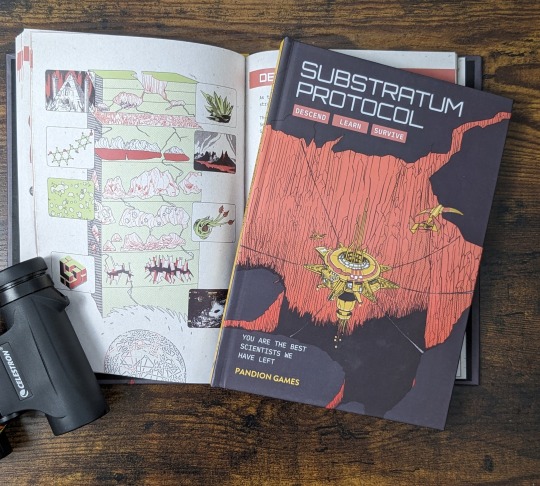
Substratum Protocol, the Solo+ Apocalyptic Mystery TTRPG by Pandion Games
The Substratum Protocol campaign is nearing its end! There are less than 24 hours left to join over 600 scientists on the expedition to save the planet!
If you haven’t yet, check out the campaign before it’s too late!
There have been some fun updates since launch, including additional artwork by Galen Pejeau, new rules for environmental hazards, and a big story update!
If you want to see what the game is about, we also have a free preview PDF for you on the campaign page.
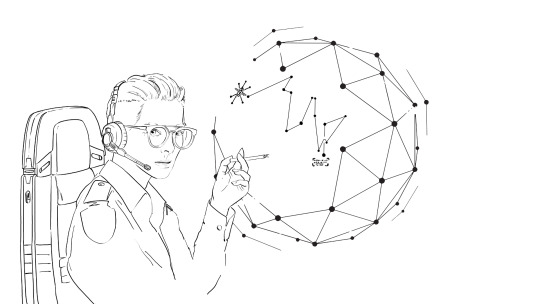
An Anomaly
During our interview with Rascal News, we realized we had made a fundamental mistake in writing an open-ended mystery: We said what was at the core of the planet, an interdimensional portal. The portal being is now just one possibility. We spent last weekend updating all the writing to now be an anomaly. The otherworldly abilities you get from taking stress are now Anomaly Influences, rather than Portal Influences, for instance. The Expedition can still decide it's a portal, but calling it an anomaly opens up a huge range of possibilities. What is the anomaly that's splitting the earth open?
Is it a massive cosmic egg hatching a world eater as part of a natural lifecycle?
Did an advance interstellar ship accidentally exit hyperspace at the center of the planet due to a miscalculation, and its damaged engines are holding open a hyperspace bubble?
Is there a cult of advanced species calling forth eldritch gods with a powerful ritual that consumes planets to power it?
Substratum Protocol is about letting the clues and your answers determine what is really happening, and we think this update opens the floodgates for it.

Depth Sector Deep Dives
In our campaign updates, we have been talking about the different sectors players can visit and their inspiration. These are all available publicly on the campaign - but we wanted to share the Fracture Opening sector with you here.
How the Depth Sectors Work
Substratum Protocol is a collaborative mystery game. The text gives hints and whispers of possibilities, but strays away from definite answers. What you discover and imagine at your table becomes canon to the story and the setting. Each sector shows its location in the Fracture, includes in-universe handwritten notes from an unknown scientist, relevant art, and a table of events - each giving a glimpse into what the sector contains. Scientists can spend as much or as little time in a Sector as they want. When they're ready to venture deeper, whoever leads the way rolls for the Travel Action.
The Fracture Opening
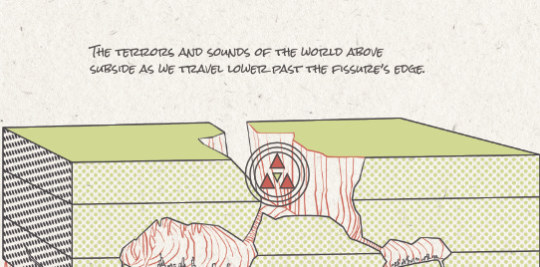
This is the first sector of the expedition experiences. At 1,300 kilometers long, it covers the distance between New York City to Miami, Florida. London, England to Naples, Italy. Melbourne, Australia to Alice Springs. Buenos Aires, Argentina to São Paulo, Brazil. It is massive. Where did the fracture open in your game? What exists teetering at its cliff walls? The world at the surface is a hellscape of the apocalypse, and much of the Fracture Opening is littered with crumbling buildings, detritus, and ancillary debris of civilization. Oceans spilling over the edge seem small in scale. Sitting suspended over it, is the Fracture Observatory. The Fracture Observatory, the home of Mission Control.
Furthest from the anomaly, this sector is rooted most in the reality of the surface. Here, players may find groups of survivors from the cities that tumbled into the great fracture, steam vents, cave ins, and earthquakes make finding solid footing and a reliable path difficult, and even here, strange subterranean creatures may make an appearance. Old research stations, part of the Substratum Protocol's monitoring efforts may still be intact here, and dangerous fast flowing waters threaten to whisk away scientists into massive whirlpools to further below. When we were first designing Substratum Protocol, the thought was that players would start in the action of the expedition and wouldn't really spend time on the Fracture Observatory or on the surface. The Fracture Opening was our way of showing what the surface was going through while still being en route. It is meant to showcase the incredible destruction happening, and give the players a sense of urgency to stop it from getting worse. How do the scientists descend into the fracture before being left to their own power? Lowered on a cable lift? Paraglide down? Or perhaps they are more like hell jumpers, free-falling through the gargantuan opening (or Link entering the depths in Tears of the Kingdom!)?
The title screen fades to klaxon alarms and screams of the world above, slowly giving way to a deafening silence of rushing wind as the expedition descends past the cliff walls into the abyssal black depths of the Fracture Opening...
Join the Expedition!
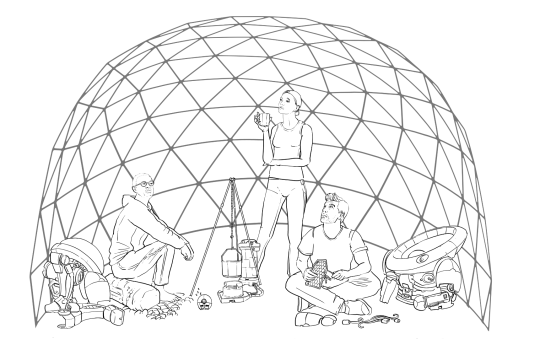
#ttrpg#indie ttrpg#mystery#solo ttrpg#hintsandhijinx#horror#journaling#crowdfunding#ttrpg community#solo journaling
37 notes
·
View notes
Note
Hello! Do you have any advice on where to start to learn Greek history ? I have a book that starts with the Minoan Civilization, is that a good starting point?
Yeah, I would consider it a great starting point!
So, regarding source hunting (I'm linking everything at the bottom):
1) JSTOR - Digital library of academic journals- needs an account
2) AUTH's digital library - More modern history heavy and solely in Greek (unfortunately)
3) Wikipaedia, Wikibooks, Wikisource etc. - always in combination with another source ofc
4) Internet Archive
5) Last but not least, storebuying or borrowing books from libraries, each with their own advantage; you may take notes directly on the book with the former while the latter is cost-efficient.
Regarding specific sources:
1) Directly from contemporary authors (it'd be preferable if you found a copy of their work with notes).
2) Oxford University's handbook of the Bronze Age Aegean
Unfortunately I don't have any other sources to recommend as I never note them done after reading them 🥲
A thing I did was use the school books as a jumping board (you can't look for something if you don't know it exists!), which have been digitalised by the ministry of education, but the translation's gonna be painful.
(I find these fascinating, although you could probs find a complete list somewhere)
(These are the digitalised school books and Google translate on mobile actually does an okay-ish job.)
You could also always use my stuff as a jumping board
12 notes
·
View notes
Text
Proclaiming the Year of Aliyan-Ba'al
KTU 1.78 is quite a peculiar piece of ancient literature. It's an astrological report from Ugarit written in the City's own language and alphabet.¹ Despite being only six lines long, it has been the subject of extended discussion among scholars due to an ominous description of an astronomical event.² This event was identified early on by researchers with a solar eclipse dated to 1375 BCE, but a 1989 reexamination by astronomer Teije De Jong and Assyriologist W.H. van Soldt pointed to another solar eclipse, of 1223 BCE, as a more likely candidate.¹,³,⁴
This challenged the prevailing view of the timeframe of the Ugaritic texts.⁵ An even fuller picture thereof has emerged from research upon texts including those discovered in the house of a Diviner named Agaptharri.⁶ Three of these are particularly intriguing in relation to the Ba'al cycle, one of them even providing insight into the ritual aspect of the myth. It's classified as RS 24.293 and it involves 𒀭Mot, the God of Death who swallows up 𒀭Ba'al before being destroyed by 𒀭Maiden Anat to restore Her Brother to life.⁷
The Fourth Tablet of Ba'al itself, written by the scribe Ilimilku of Shuban under 𒀭'King Niqmaddu IV of Ugarit (formerly reckoned “Niqmaddu III”) around the same time as the apparent eclipse, also contains a portion of broken text which bridges 𒀭Ba'al the Victorious' Great Theophany and His instructions to the Lads 𒀭Gapn and 𒀭Ugar to deliver His message to 𒀭Mot. Restoration of the text shows it appears to refer to the Sun, personified as 𒀭Shapash the Luminary of the Deities, being cloaked in gloom as a grim omen.⁸,⁹ I think it's easy to see the connection I'm making here; I believe these two eclipses can be taken together as a sort of symbolic epoch.
The date was recorded as the Month of Khiyyaru during the New Moon which was the first Day of the Month in the Ugaritic calendar.¹ This lunar calendar has twelve months beginning just before the Autumnal Equinox in September. There was a modern version on Tess Dawson's Natib Qadish website but it's no longer present and I'm interested in repurposing it if I can figure out the math involved (especially with intercalation).
In any case, under the De Jong and van Soldt dating we are now in Year 3248 of Ba'al the Victorious starting in late Summer of 2024 CE and ending in late Summer of 2025 CE. This is of course the first actual use of such a dating system, so it's only appropriate for it to take place on the civil New Year's Day. Shulmu 𒁲𒈬 and Happy New Year to all!
References
Wyatt, Nicolas. Religious Texts from Ugarit, 2nd ed, 366–67. The Biblical Seminar 53. London: Sheffield Academic Press, 2002.
Pardee, Dennis. Ritual and Cult at Ugarit, 131–32. Edited by Theodore J. Lewis. Writings from the Ancient World 10. Atlanta: Society of Biblical Literature, 2002.
De Jong, Teije, and Wilfred H. van Soldt. “Redating an Early Solar Eclipse Record (KTU 1.78): Implications for the Ugaritic Calendar and the Secular Accelerations of the Earth and Moon.” Jaarbericht Ex Oriente Lux 30 (January 1989): 65–77. https://www.researchgate.net/publication/274720180_Redating_an_Early_Solar_Eclipse_Record_KTU_178_Implications_for_the_Ugaritic_Calendar_and_the_Secular_Accelerations_of_the_Earth_and_Moon.
De Jong, Teije, and Wilfred H. van Soldt. “The Earliest Known Solar Eclipse Record Redated.” Nature 338 (March 16, 1989): 238–40. https://www.researchgate.net/publication/232779160_The_earliest_known_solar_eclipse_record_redated.
Pardee, 242.
Olmo Lete, Gregorio del, ed. “(Bn) Ảgpṯr / (Binu) Agapṯarri’s House: The Functional Analysis of an Ugaritian ‘Archive’ (PH Room 10).” In The Private Archives of Ugarit: A Functional Analysis, 27–54. Barcino Monographica Orientalia 11. Barcelona: Edicions de la Universitat de Barcelona, 2018. https://diposit.ub.edu/dspace/bitstream/2445/129766/1/9788491682394%20(Creative%20Commons).pdf.
Pardee, 211–14 (for the other two texts noted: Wyatt, 388–90 & 414–15).
Gibson, John C.L. Canaanite Myths and Legends, 66. Edited by G.R. Driver. London: T&T Clark International, 2004.
Wyatt, 111–12.
#pagan#semitic pagan#baal#anat#ugarit#canaan#paganism#semitic paganism#calendar#new year#astronomy#ancient near east#ancient history#shapash#history#shulmu#happy new year#ancient levant#bronze age#ugaritic#ugaritic mythology#canaanite#canaanite pagan#canaanite paganism#canaanite polytheism#polytheist#polytheism#phoenicia#phoenician#punic
12 notes
·
View notes
Text
youtube
#When Johnny Comes Marching Home#American Civil War#Piano#violin#guitar#sheet music#music notes#notes#piano sheet music#flute#pdf#Youtube
0 notes
Note
hI! Do you have any references on festivals? Like Saturnalia but not just limited to roman/greek ones but similar pagan or medieval type festivals (or other eras or cultures?)
Writing References: Pagan Festivals
Wheel of the Year (Contrary to modern-day Wiccan claims, there is no evidence of an ancient Wheel of the Year in its present form but it is clear that the Celts of thousands of years ago celebrated the festivals the wheel highlights, even if these celebrations were known by another name now long lost.)
Wheel of the Year: The Calendar of Pagan Festivals Explained
Some Festivals in Ancient Rome (Lupercalia; Floralia; Vulcanalia; Quinquatria; Saturnalia)
Some Festivals in Ancient Egypt (Wepet-Renpet Festival; Wag Festival; Wag and Thoth Festival; Tekh Festival: The Feast of Drunkenness; Opet Festival; Hathor Festival; Sokar Festival/Festival of Khoiak; Bast Festival; Nehebkau Festival; Min Festival; Wadi Festival/The Beautiful Feast of the Valley; Sed Festival; The Epagomenae; The Festival of Neith)
Pagan Winter Solstice Festivals (The Birth Of Mithras; Saturnalia; Yule)
Some Obscure Pagan Festivals (The Burryman Procession; Fêtes de L’Ours: Festival of the Bears; Harvest Home; Fasnacht, or Carnival; Gody Zywieckie)
Some Ancient & Pagan Holidays (Saturnalia; Eleusinian Mysteries; Yule; Wepet Renpet; Lupercalia; Akitu; Samhain; Liberalia; Dionysia; Imbolc)
Ancient Greek Festival of Panathenaea
Qingming Festival ⚜ Shehuo Festival
Hungry Ghost Festival ⚜ Pagan Origins of Christmas
Wheel of the Year. Includes the following holy days (most dates flexible year-to-year):
Samhain (31 October)
Yule (20-25 December)
Imbolc (1-2 February)
Ostara (20-23 March)
Beltane (30 April-1 May)
Litha (20-22 June)
Lughnasadh (1 August)
Mabon (20-23 September)
These 8 festivals are designed to draw one's attention to what one has gained and lost in the cyclical turn of the year.
As in the ancient Egyptian civilization (and others), the Celts believed that ingratitude was a 'gateway sin' which then led a person into the darkness of bitterness, pride, resentment, and self-pity.
By pausing to reflect upon gratitude for what one had been given in a year, as well as what one had lost but still cherished in memory, one maintained balance.
More: Writing Notes & References ⚜ Writing Resources PDFs
Hi, here are some references. Let me know if you're looking for any more specific one/s I wasn't able to include here. Hope this helps with your writing!
#anonymous#festival#pagan#writing reference#writeblr#literature#dark academia#writers on tumblr#spilled ink#creative writing#writing prompt#light academia#writing ideas#writing inspiration#history#writing resources
121 notes
·
View notes
Text
"civil rights ended today"
so ok if you consider yourself a liberal. are you gonna throw your lot in with these guys or with socialists i am so serious rn. bc the politics of the status quo got us here. the democrats completely failed you. do you wanna try and kick the football lucy and charlie brown style while the world burns or do you wanna read this textbook with me. it is available as a pdf for free
3 notes
·
View notes
Text
The article discusses a troubling trend in American academia concerning the treatment of students who express criticism of Israel. It highlights the recent arrest of Rumeysa Ozturk, a Tufts University doctoral student, who was abducted by federal agents after co-authoring an op-ed critical of Israeli policies. This incident, which has drawn significant public attention, raises concerns about the suppression of free speech on college campuses, particularly regarding topics related to Israel and Palestine. The author argues that such actions signify a broader assault on academic freedom and a chilling effect on students' willingness to engage in political discourse.
The narrative further outlines a series of similar arrests and intimidations targeting students at other prestigious institutions, including Columbia University. Mahmoud Khalil, a Columbia graduate, faced deportation after his vocal opposition to Israeli actions, while other students, like Ranjani Srinivasan, fled the country to escape potential arrest. The article suggests that these actions are not isolated but rather part of a coordinated effort by pro-Israel organizations, supported by the executive branch, to silence dissent and reshape the political landscape of American higher education. This crackdown, the author contends, represents an unprecedented shift in the treatment of political expression within elite universities, where students previously enjoyed relative freedom to voice their opinions.
Moreover, the article critiques the response from university administrations, which appear to capitulate to governmental pressure and the threats of funding cuts. The leadership at Columbia and Harvard has been notably affected, with several presidents resigning under pressure related to their handling of student protests against Israel. The author posits that the funding mechanisms and political landscapes of American universities are increasingly influenced by powerful pro-Israel donors, leading to a climate where academic integrity and intellectual diversity are compromised. This situation contrasts starkly with historical precedents, where universities had been bastions of free thought and political discourse.
Ultimately, the article argues that the ongoing suppression of dissenting voices in academia not only threatens the integrity of American universities but also undermines the country's global standing as a proponent of free speech and human rights. The author highlights that international perceptions of the U.S. are likely to shift negatively if such trends continue, noting that the treatment of students challenging Israeli policies reflects a broader authoritarian trajectory in American governance. The implications of these developments extend beyond individual freedoms, potentially destabilizing the foundational principles of academic freedom and civil liberties in the U.S.
2 notes
·
View notes
Text
Invisibilizing History
I watched a 10-year old interview by Laura Flanders with Arundathi Roy about her introduction to a new edition of Dr. B. R. Amdedkar's 1936 book The Annihilation of Caste. Arundadathi Roy's book is The Doctor and the Saint… Caste, Race, and Annihilation of Caste: The Debate Between B. R. Ambedkar and M. K. Gandhi.
Roy explained that B.K. Ambedkar is widely revered in India, especially among the Dalits. And while The Annihilation of Caste has been and is a widely read book, "you can't buy it in a normal bookshop." Roy noted that Ambedkar had written the book for the privileged class and that "they have invisibllized it."
I had never heard the word "invisibilized" and looking for it led to an interesting Internet romp. I want to share a few of the links.
Nancy Friedman at Fritinancy posted a good etymology of the word "invisibilize." Friedman helpfully pointed to the use of the word "visibilize" in social science literature.
A link on social media posted by Sydette The Dreaded Gorgon pointed to an essay in Aperture (Spring 2011) by Ulrich Bear, The Less-Settled Space Civil Rights, Hannah Arendt, And Garry Winogrand which thickened the meaning of "visibilize" in a social science context. The word "visiblize" doesn't appear in Baer's essay, but I think its a fair reading of the article to say that "making visible" is political. Conversely how Arundathi Roy uses "invisiblized" is in a political context.
My curiosity about the word "invisibilize" is heightened by the Trump administration disappearing thousand of government Web pages and purging millions of documents of particular words on the pretext of the taint of diversity , equity and inclusion. Clearly the rational for the purges have much less to do with white people's fragile feelings and much more to do with political power.
Sydette The Dreaded Gorgon pointed to the Aperture article to draw attention to Hannah Arendt's essay published in 1957 in Dissent Magazine, Reflections on Little Rock (pdf). A critical excerpt from Seyla Benhabib's book The Reluctant Modernism of Hannah Arendt fleshed out why the essay is controversial.
History is complicated, but the complications don't make history unintelligible. Benhabib notes Arednt's sympathy for Black Americans, but also how her own experience as a European Jew occluded her understanding of Black lives. Derecka Purnell's essay, The Courage To Disagree, makes the point that Martin Luther King's "praise of Israel shouldn't impede the global demand for a free Palestine." Mohandas Gandhi's doesn't negate his importance.
History is complicated, but delving into the complications can illuminate what we cannot see or to become alert to what's been suppressed or invisibleized.
6 notes
·
View notes
Text
With no shame or sign of humanity, the enemies of Israel have doubled down on their insistence that Israel is an illegitimate state that must be destroyed and that the savage slaughter of 1,200 innocent Jews was justified—all based on five “Big Lies” about the Jewish state.
They condone savagery based on utter lies
What are the facts?
The world for Jews and Israel will never be the same. Wellesley College students receive official messages saying Zionists (i.e. most Jewish students) are not welcome in the school’s dorms. Hamas official Ghazi Hamad in a TV rant swears Hamas will repeat October 7 over and over until Israel is annihilated. West Bank Palestinian activist Ahed Tamimi says “What Hitler did to you was a joke—we will drink your blood and eat your skull.”
While Hamas’s October 7 atrocity shattered the hope of many Palestinian supporters, causing them to rethink their positions, the event only ignited an explosion of hate from other of Israel’s enemies. Tens of thousands of demonstrators made clear they no longer support two states living side by side in peace. Rather they demand “From the river to the sea, Palestine will be free . . . by any means necessary”—meaning, clearly, slaughter of civilians.
Power of Big Lies: Though Israel was the victim of a mass murder of innocent Jews, its enemies blame the Jewish state—not only for the Hamas massacre, but also for responding in defense. The reasons many blame Israel for the atrocity are based on five Big Lies. Big Lies were used by Nazi leader Goebbels, who noted that if he told an outrageous lie often enough, people would begin to believe it. Alternatively, if you use truth as a basis for your judgments, you may these facts useful:
Lie #1: Israel is a colonial state that stole Palestinian land. A colonizer is a foreign nation that conquers and exploits another nation. First, the Palestinians have never controlled any land in Palestine: They were also never a nation. Nothing was stolen. Second, Jews are the indigenous people of the land of Israel. They have lived there continuously for 3,000 years and had two commonwealths for over 1,000 years: They are not foreigners. No colonial state.
Lie #2: Israel commits genocide. Genocide is the intent to destroy a national, ethnic, racial or religious group by killing its members. Israel does not, nor has ever, targeted innocent Palestinian civilians for killing—no mass murders, no pogroms. All Palestinian civilian deaths have occurred as collateral damage while fighting terrorists who hide in residential or other public areas. Tellingly, the population in in and around Israel has mushroomed since Israel’s founding in 1948—from about 700,000 to seven million today: Zero genocide.
Lie #3: Israel practices apartheid. Apartheid is a system of legalized racial segregation in which one racial group is deprived of political and civil rights. Israel has no laws or policies separating or limiting the rights of any of its citizens—including two million Arab-Israeli citizens—nor any Palestinians outside Israel. Political and civil rights of all Palestinians outside Israel are controlled by their respective dictatorships, who allow virtually no freedoms, such as speech or the vote. No apartheid.
Lie #4: Israel is committing war crimes. War crimes include torture, hostage taking, acts of terrorism, rape and intentional targeting of civilians. While Hamas committed all these acts on October 7, Israel commits none. Though some media bristle at what they consider excessive civilian deaths during Israeli military efforts, in fact, Israel attacks only military structures and personnel—never civilian-only targets. Unfortunately, Hamas places its fighters in dense residential areas or in tunnels beneath them, endangering civilians. No Israeli war crimes.
Lie #5: Israel brutally oppresses the Palestinians daily. Oppression is the malicious exercise of power to discriminate against some groups. Because Israel completely exited Gaza in 2005, it has no power over of the daily lives of Gazans. However, because of Hamas’s continuous terror, especially efforts to kill Jews and destroy the Jewish state, Israel and Egypt have placed Gaza under a strict blockade to prevent terror attacks. Likewise, because of the Oslo Accords, Israel and the Palestinian Authority share governance of Judea and Samaria (the West Bank). Thus, Israel plays virtually no role governing Palestinians daily lives and only enters Palestinian-controlled areas when terrorists flee to and hide in them. No oppression.
Above all, Israel and the U.N. have made numerous offers of land for an independent Palestinian state. Unfortunately, the Palestinians have turned down five offers of land for peace since 1948, three of them over the last 23 years. Apparently, their dream of conquering Israel “from the land to the sea” is more important.
The bestiality of the October 7 massacre shocked us—beheadings, incineration, rape, torture, heartless executions, brutal kidnappings. Even worse, the gates have opened to unlimited Jew hatred on American streets and campuses—to condoning savagery with the excuse of Palestinian liberation . . . based on utter lies about the Jewish state. But Hamas and the haters should know that “Never Again,” means fighting and defeating evil forever.
19 notes
·
View notes